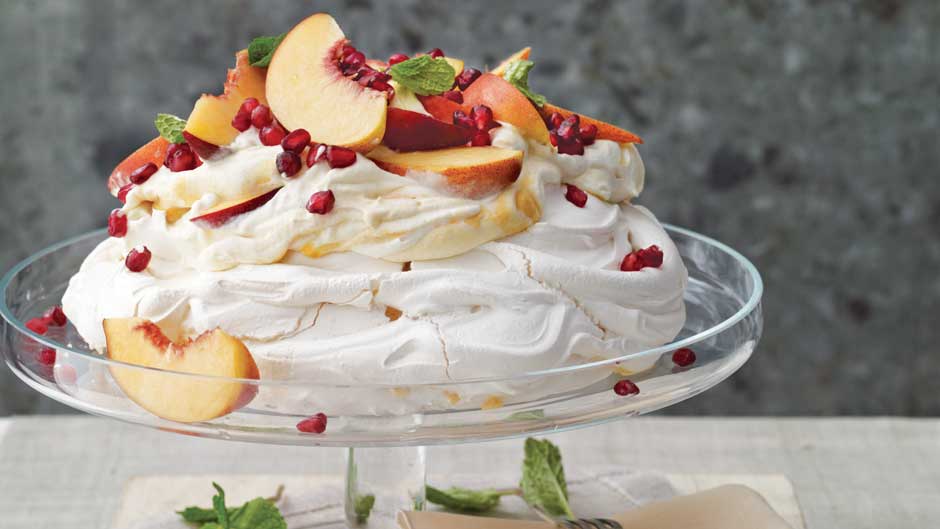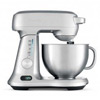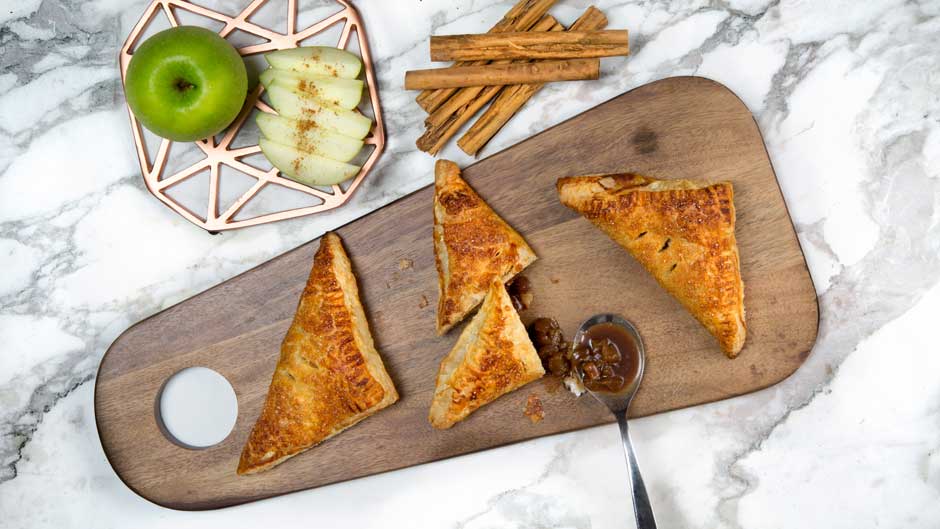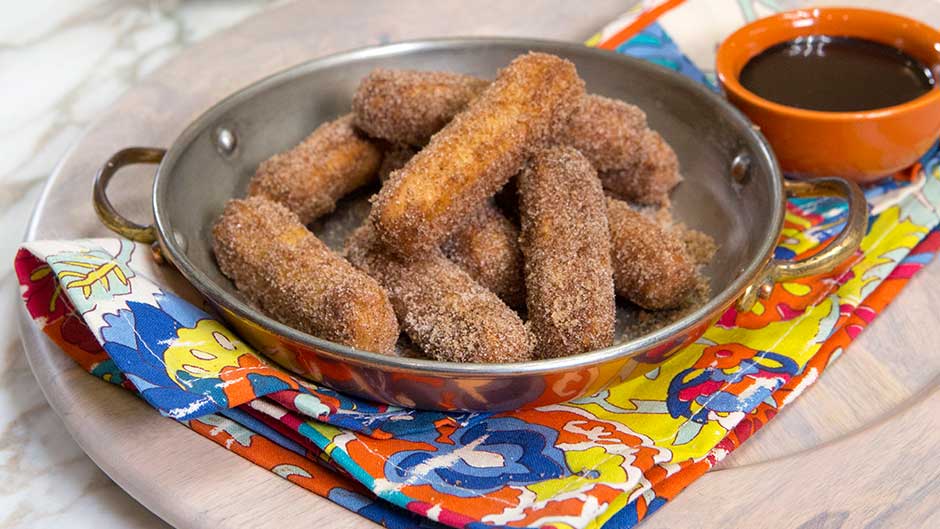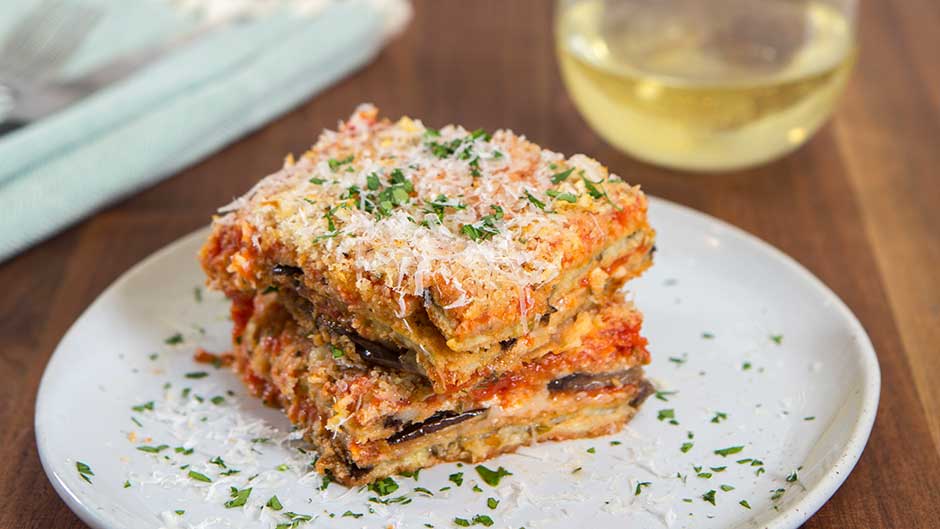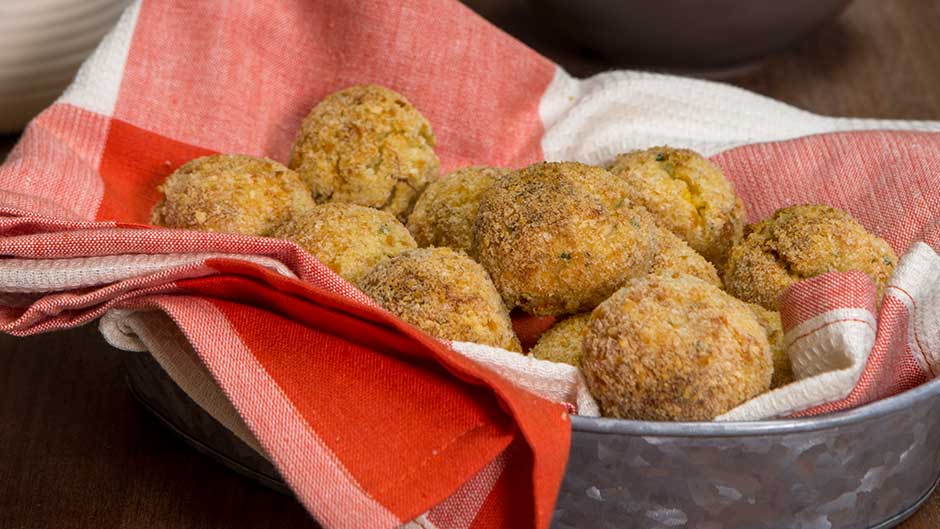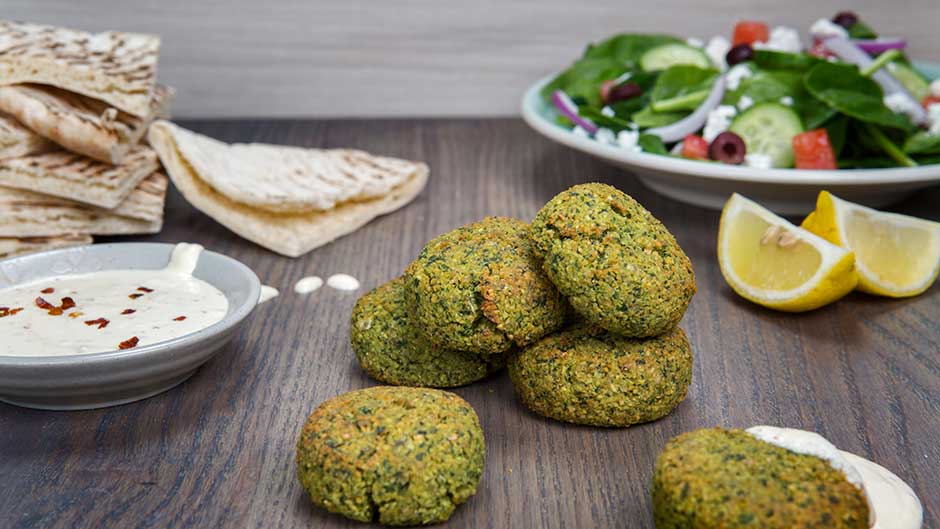Years ago, I had the opportunity to talk with famed Aussie chef Nicky Major about Pavlova, a meringue dessert named after Russian ballet dancer Anna Pavlova. Nicky’s description of the crunchy outside and soft, creamy interior won me over and, honestly, I’ve been obsessed with this dessert ever since that conversation. Here, with this recipe, I think I have made Nicky proud. I’ve chosen a peach theme (purée folded into whipped cream with slices on top) for this Pavlova, but other fruit like mangos, kiwis, papayas, or berries would all be delicious. As you can see, the end result is almost too pretty to eat…almost.
Ingredients
For the Pavlova
- 1 1⁄2 cups superfine sugar
- 2 Tbs. + 1 tsp. cornstarch
- Pinch of table salt
- 5 whites from large eggs at room temperature
- 1⁄2 tsp. cream of tartar
- 1 1⁄2 tsp. vinegar (distilled white, white wine, or white balsamic)
- 1 1⁄2 tsp. pure vanilla extract
For the peachy whipped cream
- 2 ripe, medium peaches, halved, pitted and cut into wedges
- 1 1⁄4 cups heavy cream, chilled
- 2⁄3 cup confectioners’ sugar
- 1⁄2 tsp. pure vanilla extract
For the fruit topping
- 2 to 3 cups thinly sliced peaches of varying colors (from about 3 peaches)
- 1⁄3 cup pomegranate seeds
- Small mint sprigs
MAKE AHEAD:
The baked and cooled meringue can be stowed in an airtight container at room temperature for up to 1 day. The peach purée can be made and refrigerated for 1 day or frozen for up to 3 months. Thaw before using. The finished Pavlova can be assembled and refrigerated for up to 1 hour.
Instructions
- Position a rack in the center of the oven and heat the oven to 300F. Trace a 7-inch circle in the center of a piece of parchment and arrange it marked side down on a cookie sheet (nonstick liners don’t work with this recipe).
- For the best meringue volume, start with super clean equipment. Put the superfine sugar, cornstarch, and salt in a small bowl and whisk until well blended and no lumps remain. Set aside.
- Put the egg whites and cream of tartar in a clean bowl of a stand mixer fitted with the whisk attachment (or in a large bowl using an electric handheld mixer fitted with wire beaters) and beat on medium speed until the whites are frothy, 30 to 45 seconds. Increase the speed to medium high and beat until the whites form soft peaks, 1 1⁄2 to 2 minutes. Continue beating while gradually adding the sugar mixture by tablespoonsful. This will take about 3 minutes, stopping and scraping down the sides twice. When all the sugar mixture is added and the whites are firm and glossy, add the vinegar and vanilla. Beat on high speed until blended, about 30 seconds.
- Scrape about half of the meringue into a mound in the center of the traced circle and spread to the edges. Scrape the remaining meringue onto the center in a mound and, using the back of a large spoon, spread to an even but very free–form thickness around the sides with some swirls and peaks. Make a shallow indentation in the center of the meringue.
- Reduce the oven temperature to 200F. Bake until the out-side of the meringue feels firm and it moves only slightly when nudged with a fingertip (the center will still be soft), 2 to 2 1⁄2 hours. Turn off the oven and let the meringue cool completely in the oven or up to 8 hours. Move the sheet to the counter. Carefully slide a long metal spatula between the parchment and the meringue to loosen. Using the parchment, move the meringue to a flat serving plate and gently nudge the meringue onto the plate; discard the parchment.

